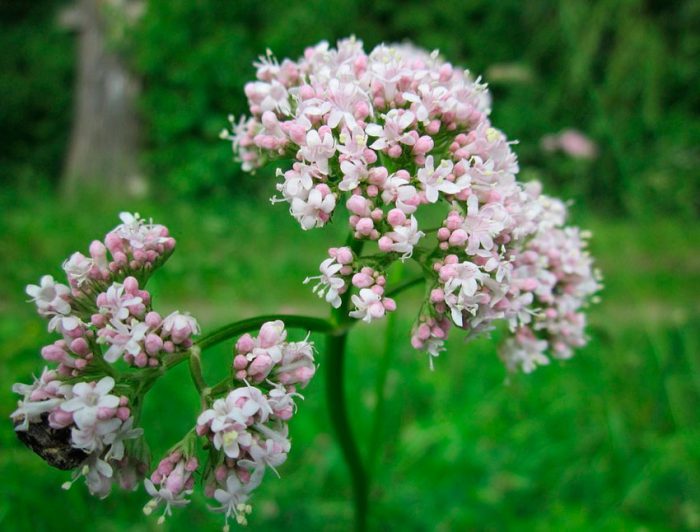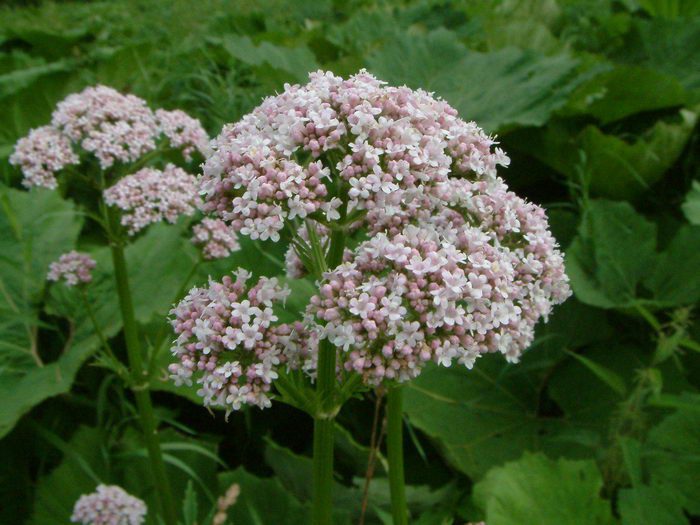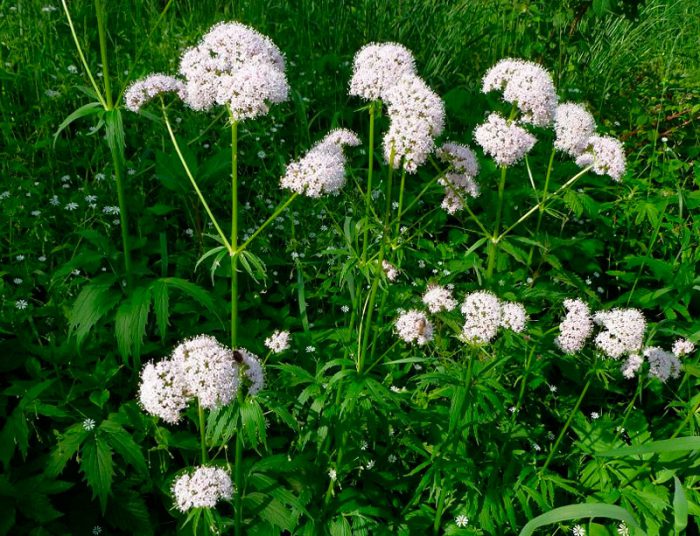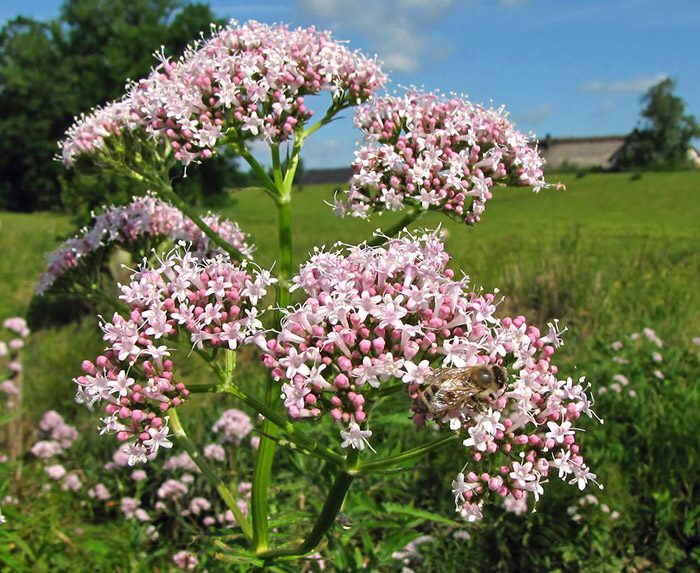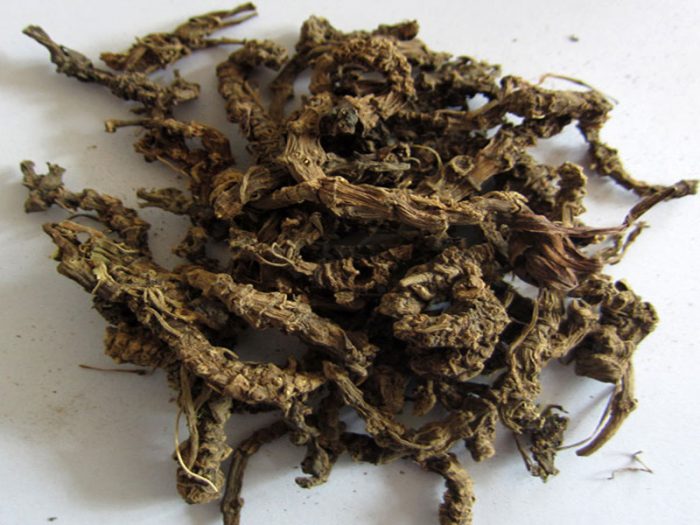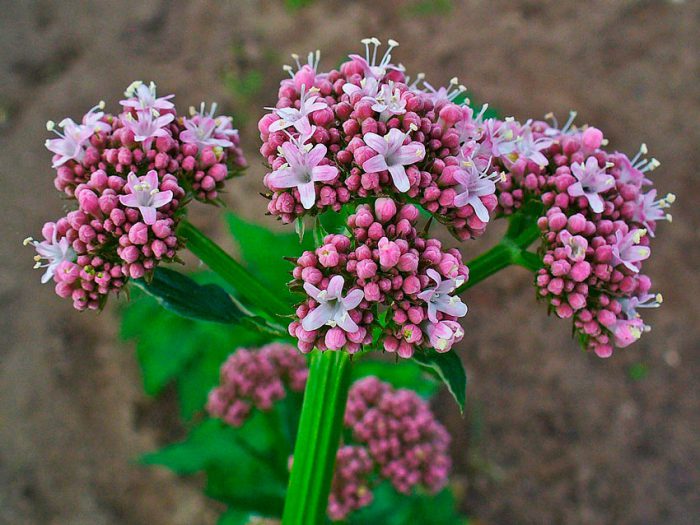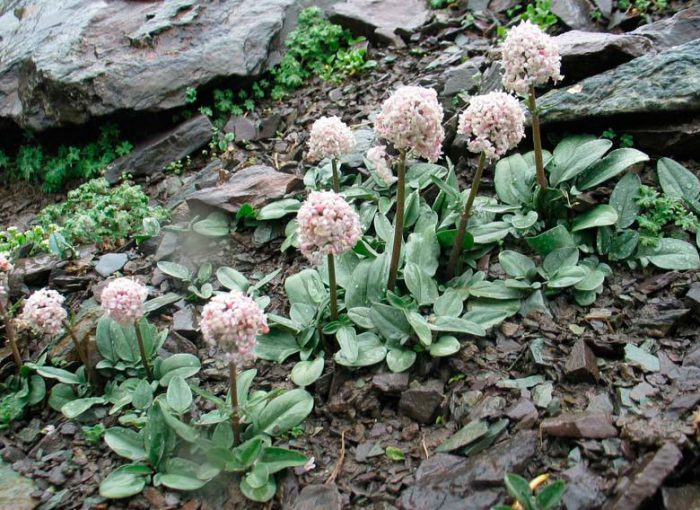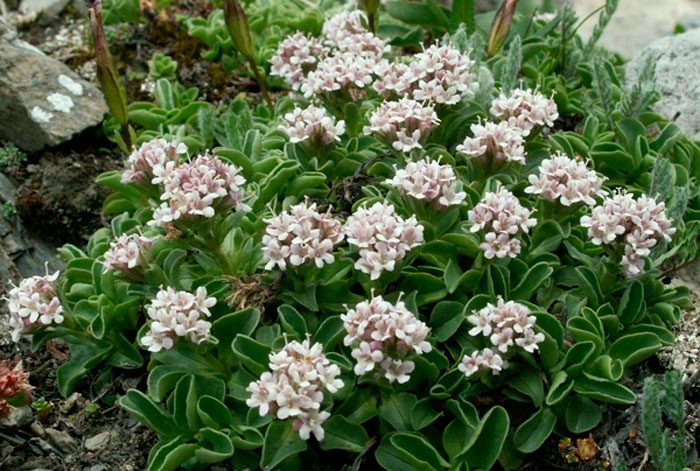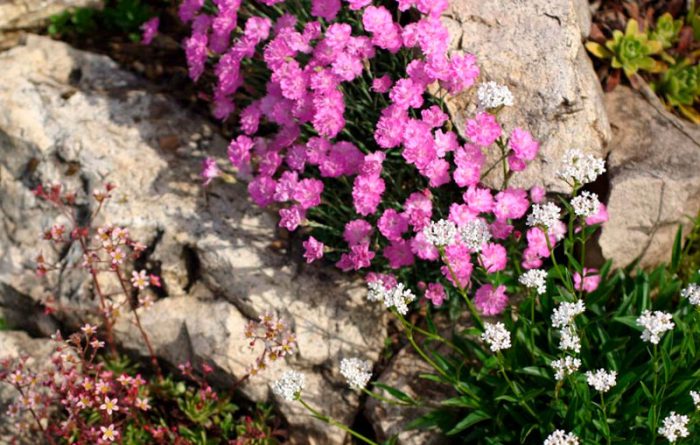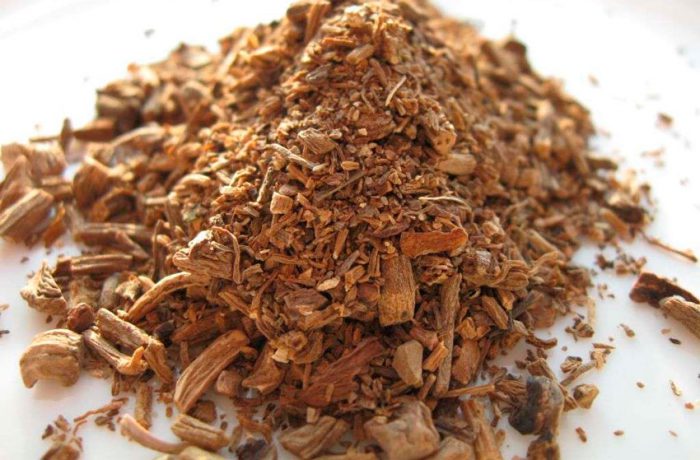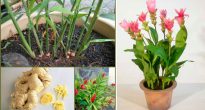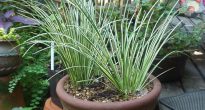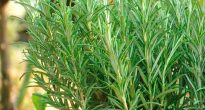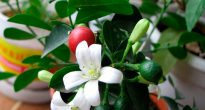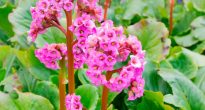Valerian plant (Valeriana officinalis), also called cat grass or medicinal valerian, is a member of the genus Valerian of the honeysuckle family. She comes from the Mediterranean. It grows in temperate and subtropical areas, while prefers low-lying and swampy meadows, meadows, swamps and forest edges, and such a plant can also be found among bushes. The medicinal properties of valerian were already known in ancient times, so Pliny, Avicenna and Dioscorides attributed to her the ability to calm and strengthen the brain, and it was also believed that she could control human thoughts. In the Middle Ages, such a plant was used as a sedative and aromatic agent. Valerian ended up in the pharmacopoeia of Europe only in the 18th century, at the same time it began to be grown on an industrial scale. There are several versions about the origin of the name of such a flower. Someone assures that he is called Valerian in honor of the Roman emperor, others are sure that he received the name in honor of Valerian, who was Pliny's doctor. From Latin the word “valerian” is translated as “to be healthy”.
Content
Features of Valerian
The height of this herbaceous perennial plant varies from 1.2 to 1.8 m. The short and thick rhizome has a loose core, sometimes it is hollow and has transverse septa. From it, stolons and thin, fragile and smooth adventitious roots grow, reaching 12 centimeters in length. This rhizome has a pungent odor.
Erect, fistulate, grooved stem branches at the top. The lower and middle leaf plates have long petioles, while the upper ones are pinnately dissected, sessile, opposite, alternately arranged or collected in whorls of 3 or 4 leaflets. Small (about 0.4 cm in diameter) white fragrant bisexual flowers are part of large axillary or apical panicle or corymbose inflorescences. Starting from the second year of life, the plant blooms throughout almost the entire summer period. The fruits are achenes that ripen in the last summer or the first autumn weeks.
Growing valerian from seeds
Landing
For valerian, you can choose a place that is well lit, shaded, or located in the shade. Sowing is recommended at the very beginning of spring, while the site is prepared in the fall. To do this, you should dig up the soil to a depth of 25 to 30 centimeters with the introduction of a complete mineral fertilizer or humus (compost). In spring, after the topsoil has dried, it will only need to be loosened with a rake. But it should be borne in mind that the seeds lose their germination after a short time, in this regard, some gardeners recommend sowing them directly after harvesting in the summer, while the soil must be dug up with organic matter (compost or humus), 1 square meter is taken 5-7 kilograms of fertilizer.
Seeds are sown in shallow grooves, while they do not need to be sealed, but you just need to cover them with a thin (about 10 mm thick) layer of sifted peat or sand combined with humus. The distance between the rows should be between 8 and 10 centimeters. Before the emergence of shoots, it is necessary to ensure that the soil on the site is constantly slightly damp.
If you already have valerian on your site, then it is better to use its stolons for reproduction. In autumn, in October, the bushes should be removed from the soil and the tops should be cut off, while the stolons (underground shoots) are separated from the rhizome, and they are used as planting material. On average, you can cut 5–8 stolons from one bush, the buds of which are completely ready for reproduction. The rhizome can be used as a medicinal raw material, while the stolons should be planted in a new place immediately after separation, the distance between the holes should be within 15–20 centimeters. Planted stolons need abundant watering. It should be noted that with this method of reproduction, a very large percentage of stolons take root.
Care features
At first, watering the crops must be done very carefully, using a strainer for this, which will prevent the seeds from washing out of the soil. When seedlings appear on the surface of the soil, the number of waterings should be reduced. After the seedlings have a second true leaf plate, they will need to be thinned out, keeping a distance of 30 to 40 mm between them. Then, the plants are fed with a solution of bird droppings (1:12). When the seedlings have 5 true leaves, they will need to be fed again with the same nutrient solution.
If the sowing of valerian was carried out in the spring, then in some cases it will be possible to harvest the first crop in the fall. At the same time, every second bush must be removed from the ground, and those that remained for the winter need to be fertilized with Nitroammophos (50 grams of substance per 1 square meter). To protect the plants from winter frosts, in the fall, the site should be covered with small twigs, on top of which a thick (5-6 centimeters) layer of straw or dry stems is spread. In the event that a thaw is observed in winter, then in order to avoid valerian damping out in the straw, several windows should be made.
The first flowering of this plant is observed already in the second year of life. As soon as you notice that the seeds are ripening, the peduncles will need to be cut off, after which the plants are fed with a solution of bird droppings. In the event that you want to collect seeds, then the cut peduncles must be folded under a canopy, where they will stay until the seed is fully ripe. In the autumn, rhizomes are dug up.
Collection of valerian and storage at room conditions
Collection
The harvesting of valerian rhizomes is carried out in October after the shoots of the bushes become brown and completely dry. If you want valerian to retain the maximum number of medicinal properties, then the collection should be carried out in accordance with all the rules. First, the rhizomes are removed from the soil, then the remains of the soil are removed from them and the above-ground parts are cut off.Next, the roots must be well washed under running cold water and this must be done quickly enough. Then they are laid out in the fresh air, where they will dry up for two days.
Drying
Then the rhizomes should be laid out on a wire mesh in a room where they will dry for 14 days, and they should be turned over regularly. To dry the roots, you can use an oven or a dryer, while setting the temperature from 35 to 40 degrees, this method will save you precious time. Dried roots turn brown and have a pungent specific odor. After 1 kg of rhizomes is completely dry, it will weigh about 0.2 kg.
So that the dried rhizomes of valerian do not lose their healing properties, they should be stored in containers that are tightly closed, otherwise the essential oil will volatilize. They can be stored for up to three years.
Types of valerian with photos
The most popular species is Valerian officinalis. Other species are cultivated by gardeners only as ornamental plants. The most decorative types:
Altai Valeriana (Valeriana altaica) = (Valeriana turczaninovii = Valeriana heterophylla = Valeriana reverdattoana)
The homeland of this species is Siberia and Northern Mongolia. The rhizome is elongated, straight shoots are practically naked or glabrous. Basal leaf plates can have 2 lateral segments or be whole, while the stem-shaped ones are lyre-pinnately dissected. The capitate inflorescence in some cases has additional small heads. The pale pink flowers are narrowly funnel-shaped. The bare fruits are purple in color.
Valeriana petrophila
This species is native to Northern Mongolia and Siberia. The rhizome is shortened, it has cord-like lobes, at the end of the stolons there are bundles of leaf plates. On 1/3 of the curved or ascending shoots, the length of which is 5–20 centimeters, there are sheathic leaf plates. The lower leaf plates are rolled into a raised rosette; they have long petioles. Sessile leaf plates of the upper pair are solid or have 2–3 pairs of small lateral segments. The dense inflorescence has a racemose, almost capitate shape, it consists of pink flowers. When the time for fruiting comes, the inflorescence grows strongly and becomes loose.
Valeriana supina
The homeland of this species is the eastern regions of the Alps. The basal rosette consists of rounded ovate leaf plates. This plant grows pale green pads, the height of which varies from 2 to 7 centimeters. The diameter of dense inflorescences reaches 30 mm, they consist of small pink flowers. This species is grown in rock gardens as a ground cover plant. Such a valerian grows a large number of underground stolons, so it has the ability to capture rather vast territories.
Rock Valeriana (Valeriana saxicola)
This plant can be found in the wild in the mountains of Turkey and the Caucasus at an altitude of 1800-2500 meters above sea level. The height of such a perennial plant does not exceed 15 centimeters; it forms not very large bushes. There are relatively few narrow stem leaf blades. The length of the basal leaf plates is about 20 mm, they have an oblong-oval shape, they are pointed. Compact brushes consist of pink flowers.
Such types of valerian are also cultivated as: mountain, three-winged, capitate and lipoliferous, but it should be borne in mind that they do not have a spectacular appearance.
Valerian properties - harm and benefit
Benefit
Why is valerian so useful? The fact is that its rhizomes contain a large number of useful substances, such as: essential oil, butyric, formic, malic and acetic acids, terpenoids, actinidine alkaloid, valerid glycoside, resinous and tannins, sugars, free isovaleric acid, saponins, vitamins, macro- and microelements (for example, selenium and iron). The human body needs all these substances, this is the healing power of valerian. The most valuable substance is essential oil.
Means made on the basis of medicinal valerian are most often used in the treatment of nervous disorders such as: muscle cramps, neurasthenia, hysterical and epileptic seizures, insomnia, migraines, and other chronic mental disorders. The rhizome of this plant has a sedative effect, due to which it helps to weaken the excitability of the nervous system. It is also used as a sedative for renal and hepatic colic, hyperthyroidism, hypertension, thyroid diseases, neurodermatitis and spasms of the gastrointestinal tract.
Valerian helps to reduce blood pressure, dilate blood vessels, and relieve venous spasms. In England and Germany, valerian is recognized as the official sleeping pill. Almost ½ of the US population that suffers from sleep disorders also takes it as a sleeping pill.
Also, valerian helps to stimulate the secretory function of the digestive tract and bile secretion, and also normalizes the work of the heart and blood vessels. It is also used for weight loss, because this plant can reduce appetite, eliminate a strong feeling of hunger and soothe. 1 tbsp. valerian infusion replaces a full meal in the complex treatment of obesity.
Also, this medicinal plant is widely used in cosmetology, since it can eliminate redness, rashes, increased sensitivity of the epidermis, and can also improve skin color.
In the pharmacy, there are on sale such preparations based on valerian as Fitosedan, gastric collection No. 3, "Dried rhizomes with roots" and soothing collection No. 2. Healing products from such a flower can be prepared independently in room conditions. In order to make a decoction, you must combine 1 tbsp. water and 1-2 small spoons of finely chopped raw materials. The mixture is put on fire and allowed to boil for no more than 1 min. Then it is removed from the stove, and the container is covered with a lid, the product will be ready after 30 minutes, it remains only to strain it. You need to drink the broth 3 or 4 times a day after a meal, one large spoonful for vegetative neuroses, palpitations, vomiting and insomnia.
Contraindications
You can not take funds from valerian for people with individual intolerance to this plant, as well as those who have hypertension and chronic enterocolitis. Caution with the dosage when taking should be exercised during pregnancy and lactation. It should be remembered that such drugs increase blood clotting, so they are not recommended for the elderly, as well as for those who have suffered a stroke or heart attack.
When taking valerian medicinal, a person may feel the following undesirable side effects: drowsiness, slight depression, or decreased performance. If you use them for a long time, you may experience the development of an allergic reaction or constipation.
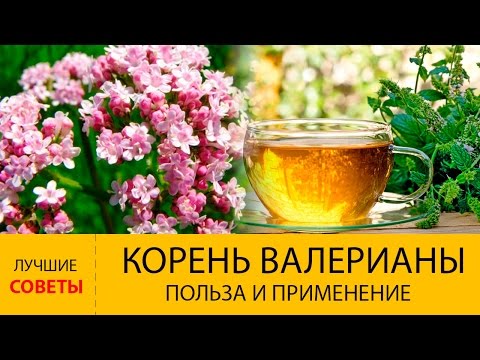

Watch this video on YouTube

